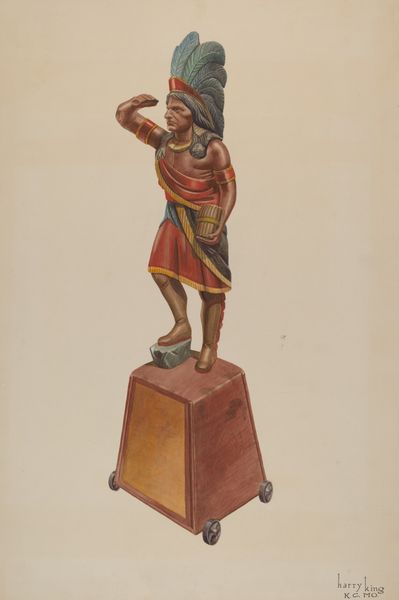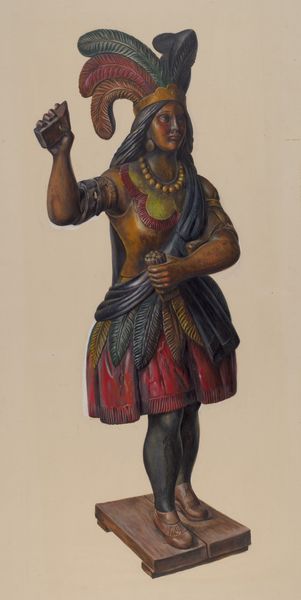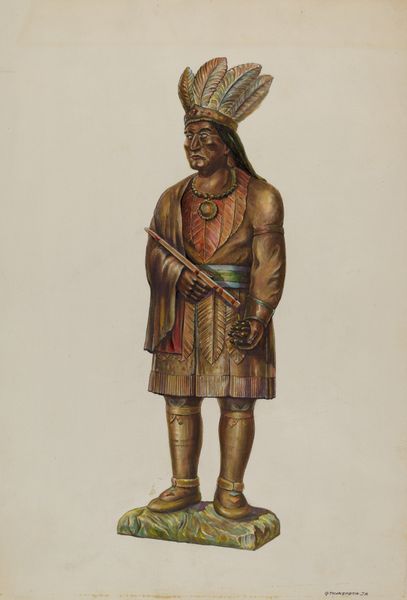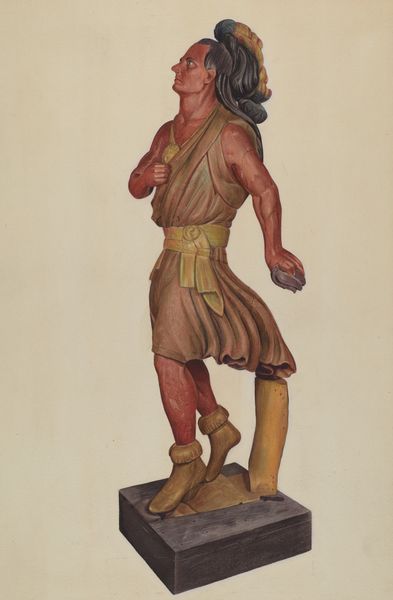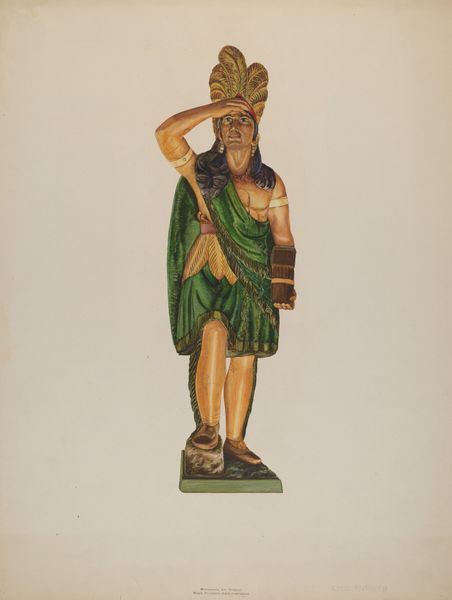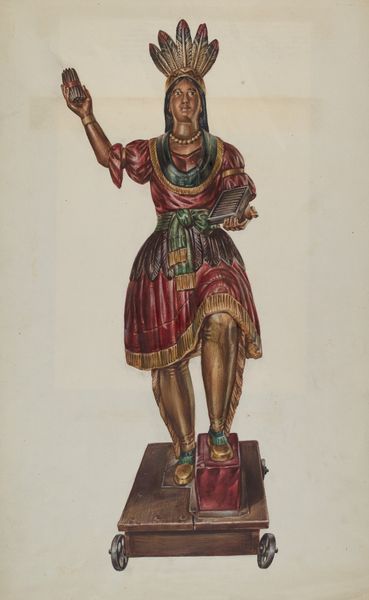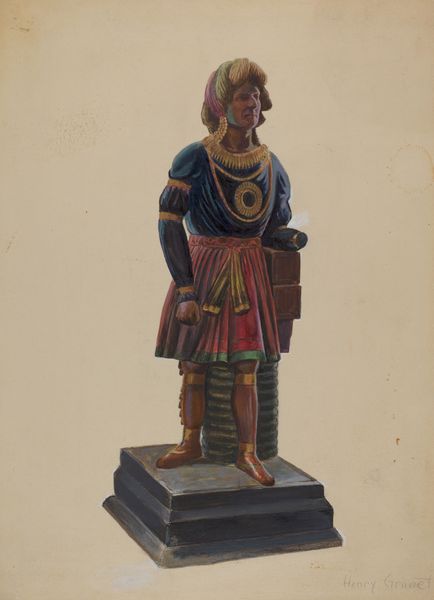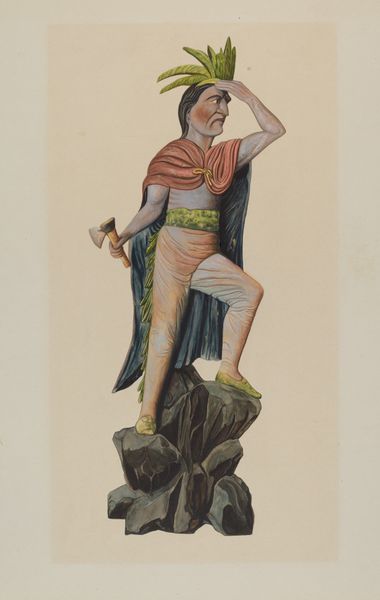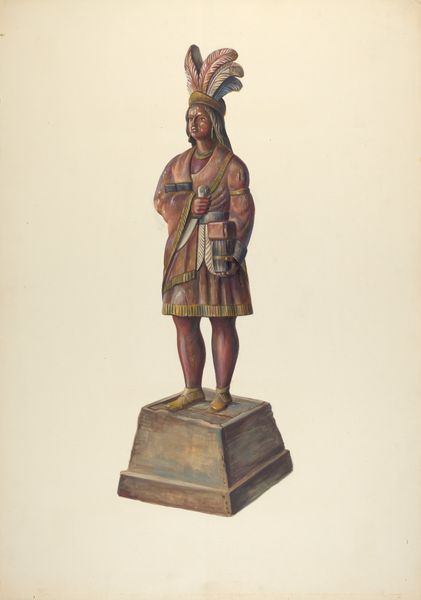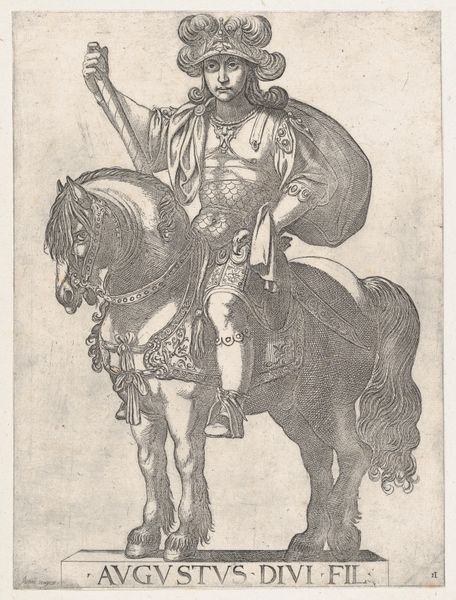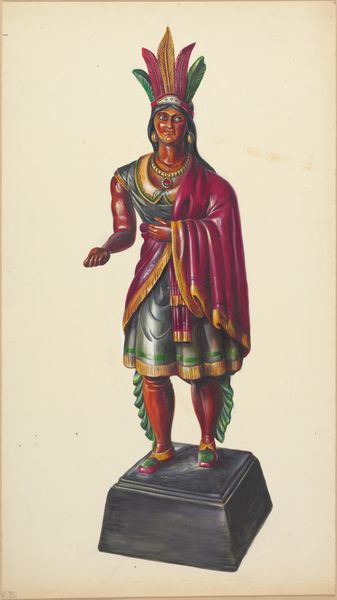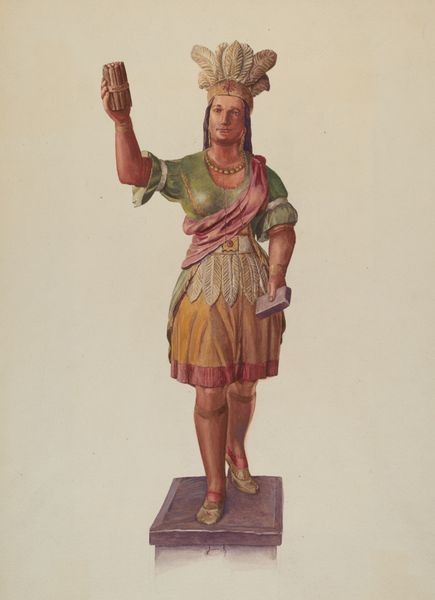
drawing, coloured-pencil, watercolor
#
portrait
#
drawing
#
coloured-pencil
#
charcoal drawing
#
figuration
#
oil painting
#
watercolor
#
portrait drawing
#
history-painting
#
academic-art
#
portrait art
#
watercolor
Dimensions: overall: 35.2 x 22.1 cm (13 7/8 x 8 11/16 in.)
Copyright: National Gallery of Art: CC0 1.0
Editor: Here we have Charles R. Shane’s "Seated Warrior," made around 1939 using colored pencil, watercolor, and other drawing media. He seems contemplative, even burdened by his armor and role. What do you see in this piece, from a historical perspective? Curator: It's a fascinating work, especially considering the period it was created. The 1930s saw a lot of public art focused on the heroic, often with specific ideological bents. This piece, while depicting a warrior, subverts that expectation through its introspective mood. Is it an embrace or critique of that era’s heroic imagery, and how was Shane presenting heroism? Editor: That's interesting, I hadn't thought of the possible commentary. His dejected posture suggests he's weary of the glorification. So was the piece created during the buildup to WWII and meant to communicate that fatigue? Curator: Potentially. The drawing’s creation during a pre-war context suggests anxieties about looming conflict, critiquing aggressive nationalistic ideologies of the era. Could Shane have been channeling wider sentiments of apprehension, offering a different view of a soldier figure from what political discourse advanced at that time? Editor: The way the figure seems to droop communicates that really well. It moves it away from a celebration to more a recognition of the realities. Curator: Exactly. Consider too how the media --colored pencil and watercolor—differ from monumental sculptures or paintings typically used for propaganda. Its subtlety allowed Shane to make a gentler critique of power. Editor: It gives an added layer of questioning surrounding how a warrior can be seen by society, which, thanks to you, I did not consider at the beginning. Curator: Indeed, exploring the art piece using history makes new meanings to interpret what this alludes to from social, cultural, and historical backgrounds.
Comments
No comments
Be the first to comment and join the conversation on the ultimate creative platform.
